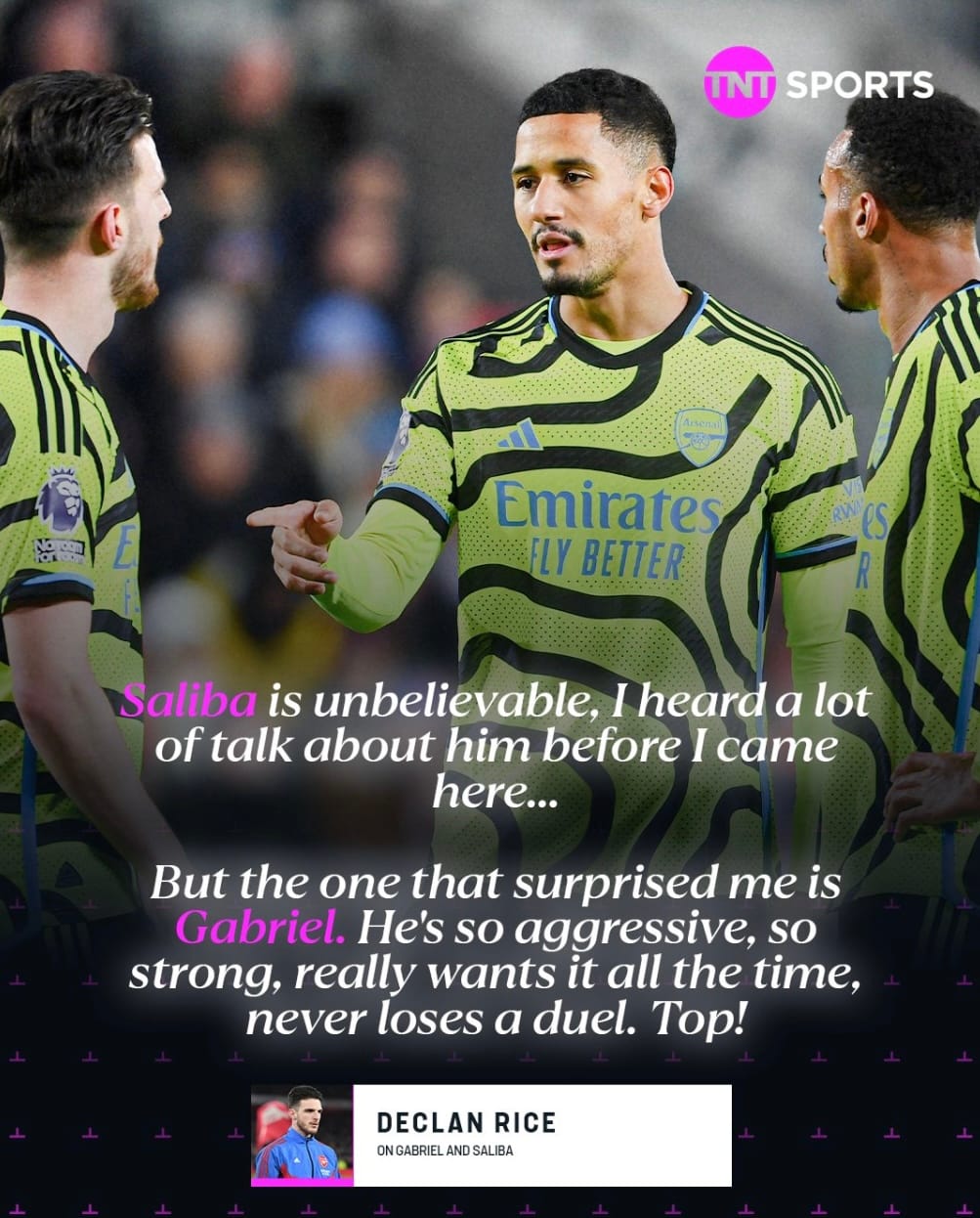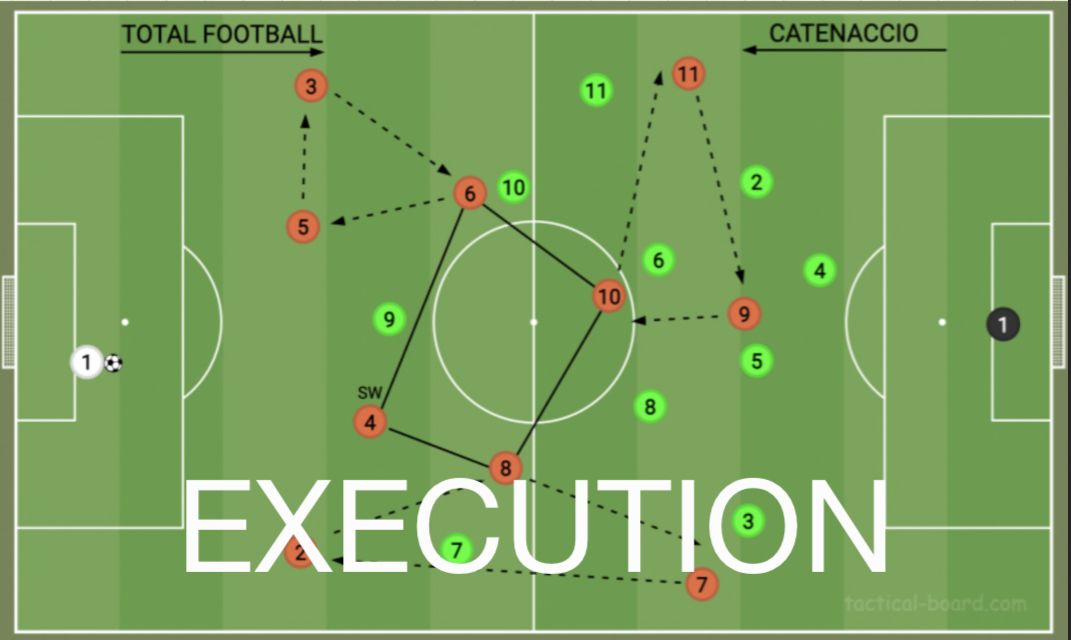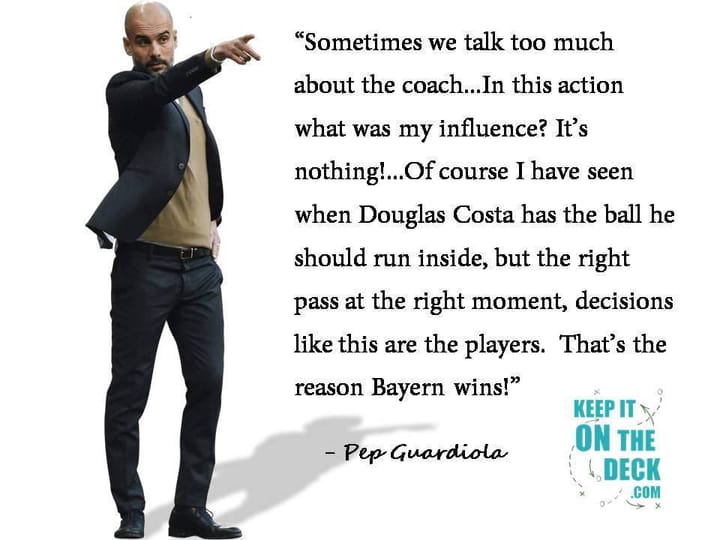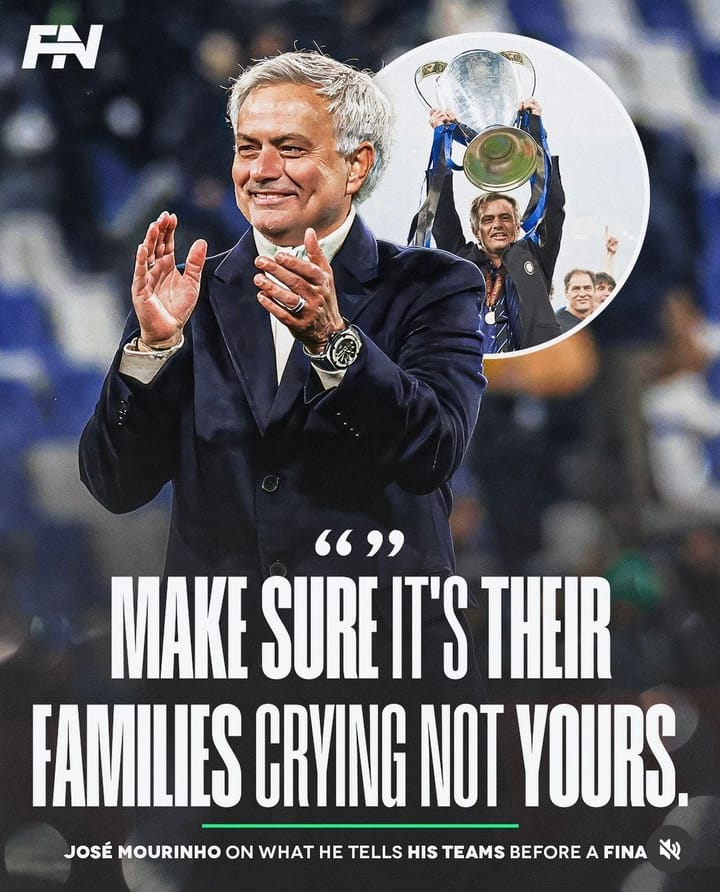ARSENAL 23/24 DEFENCE ANALYSIS

Since I started coaching, the defensive side has always come easier to me and also for the first few years was more of a focus. Why it came easier than attack I’m not so sure, I spent most of my youth career as a forward in various positions and roles so it would make more sense that I wanted to attack, attack, attack with my teams. This was before one game at centre back in Under 18s due to injuries. The first half was dreadful and I was at fault for all three goals which found us 3-0 down. They were a lost 1v1, a handball penalty I gave away somewhat unluckily as it was from a ricochet and a cross where I lost my man. The second half however, we conceded only one goal from a corner where the keeper spilled it to an attacker. We played a lot deeper and cleared our lines a lot more. From my first season in men’s football onwards I have since then primarily been a defender and it was for the most part due to this game. Maybe that’s why I wasn’t really thinking about attack, I was a lot more off the cuff which meant a more erratic style, but playing at the back forced me to think. It never surprises me as much as when most good players can’t translate their skills to coaching; if you haven’t had to think about it then how would you know how to teach it? Being forced to think about it, with a steep learning curve the first season or two helped me have so many lightbulb moments that I have been able to pass on to players.
As for why my teams spent a lot of time on it, is due to a few things. Even if I had to think about defending more and therefore was better able to explain it, this doesn’t explain why I spent a disproportionate amount of time on BPO; ball possession opponent, just a fancy way of saying we don't have the ball. If I wanted to play possession football, which I did, and average 60% possession, surely I would spend this much time on BP (ball possession). This was far from the case in the first few years. I wanted to run good sessions and as my ‘good’ sessions or better sessions were BPO, I focused more on that. After a few years I realised I needed to get out of my comfort zone and went out of my way to assist with some great attacking coaches, as well as barely coaching defence with my own teams but just aiming to be so good with the ball that we never had to do it in the first place. Now I think I have found a much happier balance.
I also read a book called The Numbers Game by Chris Anderson and David Sally, published in 2014 which is probably the first drop in the water to me starting this site. In it, they explain the theory that keeping a clean sheet is worth more than scoring a goal, and for a long time I believed this, as it made sense to me and the numbers in the book lined up. I even used this ‘analysis’ to help get my first men’s coaching job at Kangaroo Point Rovers. The book explains that if you keep a clean sheet you are guaranteed a point but likely more as you only need to score one goal to make it three. Scoring a goal is strongly correlated to a point gained but it doesn’t guarantee a point, for example in a 3-2 loss. It is not ’til I read another book called How To Win The Premier League by Ian Graham this year that I saw those numbers were wrong. I have a full review of this book coming soon too. As I said, when I started coaching in 2016 I was more focused on defence, but from 2020 onwards (even before I had the concrete numbers to see what The Numbers Game got wrong) I had been coaching more attack in-line with not only what I needed to work on, but also where I saw the game going as well.
Now on to the meat of the article (or tofu for my vegan followers). As much as I might now skew towards being more attack-focused with my training, tactically I appreciate a good defence a lot more. Some of my favourite managers for defence include; Simeone (Atletico), Klopp (Dortmund & Liverpool), Mourinho (Chelsea years), Sacchi (Milan) and Nagelsmann (Hoffenheim years). I plan to do analysis on what makes all of them great but I am going to start this series with the best defence from last season in the Premier League as I have more of those games available to watch and also the stats to back-up my arguments. This list of managers also shows I am not wedded to one style, as especially in defence, I think it is better and also easier to explain to players the need to be flexible.
I also want to mainly focus on the back five (back four plus keeper) as Arsenal always started with a back four and didn’t rotate too much; this makes it easier to look at how they worked as a unit. Their most common lineup was: Zinchenko, Gabriel, Saliba and White. Rotation options included Kiwior and Tomiyasu. These six players accounted for 97% of their minutes and is the the kind of settled most teams can only dream of. Raya also started 32 matches to Ramsdale’s six.
Before diving in to stats, I’d like you to watch the below video, if you know about survivorship bias it should make sense. When looking at the best defence in any given league season it is important to think about the goals they concede and if they are a bug or a feature. As much as I hate the idea, all teams do concede goals. People aren’t perfect and being a step behind or second too slow to process can lead to a goal. The main thing to focus on is if the tactic or decisions you choose to make suits your players and if the benefits outweigh the consequences. For example you could concede goals from quick balls behind your fullbacks but how many assists do they get? This is a feature not a bug. The stats for me are better at telling us what Arsenal are good at, or the "bullet holes" and then the video analysis shows the "planes that didn’t make it home and areas to reinforce". I also purposely collected all of the clips to analyse at a later date as I think watching them all back to back would negatively sway my analysis.
Arsenal conceded 29 goals from an XG against of 27.9 so roughly as expected. They kept 19 clean sheets and Raya/Ramsdale only had to make 55 saves. This was 22 less than City’s keeper duo had to make which is why any talk of Raya being keeper of the season simply for winning the golden glove was pish posh. They made, according to the Premier League website, seven errors leading to goals and according to both of us (the site and me) scored one own goal. We will look for the seven in the video analysis but for me this does seem high, especially from only 18 errors leading to shots. In a single season, although it is a decent sample size, we expect to still see vast over or under-performance, especially in shooting or save metrics. Arsenal goalkeepers not only had the tied lowest post-shot expected goals per shot on target but also underperformed it by 3.9 goals over the course of the season. The reason post-shot expected goals on target is better for goalkeeper performance is it only accounts for the actual saves they have to make. It doesnt, like standard expected goals include blocked shots or shots off target. So in theory although again this is a noisy stat this means that positioning or maybe reflexes were off. If they had the Newcastle United keepers in goal purely for the shots faced part of goalkeeping last season they could have conceded 3.9/4 less goals. Newcastle goalkeepers performed exactly as expected with 0.0 post-shot expected goals on target minus goals allowed metric. The main area where Arsenal keepers did shine, were crosses stopped, with 48/375 or 12.8%, which is good for highest in the league. Passing was just ok, sweeper keeping was average and they saved 1/3 penalties which although above average it’s from just about the smallest sample size possible. Basically all of this is to say the reason they had the best defence in the league was not due to Raya/Ramsdale and if anything they actively made the defence work harder for this achievement.
Now for me some of the best stats are where do the goals comes from. Fbref has a stat called goal creating actions (GCA) and splits them up in to, live and dead passes, take-ons, shots, fouls and defensive actions. If you’re thinking how is there 44 GCA and only 29 goals conceded this is due to some goals being a combination. For example a 1v1 then a cross would be live pass and also TO or take-on. From this nothing jumps out at me to be looking for during the video analysis. Sh is shot leading to shot so a rebound. Fld is fouls leading to a shot. Def is defensive action leading to a shot so a tackle or deflection falling to an attacker who shoots for example.

When I then look at raw counting stats such as blocks, tackles and interceptions Arsenal are where I expect them to be for a high possession team which is low on all of these. Something I thought might reveal more is when you split up tackle attempts in to each third but Arsenal are low for tackles attempted in their own and the middle third. They climb to 7th for final third attempts which holds true with them being a high press team that dropped to a mid block occasionally. They averaged about half an attempt less here than the gung-ho Tottenham at the top of the list.
Something I always tell my teams is that if we have the ball they cannot score, now this is only technically true as you could still score an own goal without them touching it. They could also (as happened to Ramsdale) tackle your keeper in to a goal where no technically you’re in possession but then do you argue they had it for a split second before it went in or that no one possessed the ball? Anyway the point being that teams with high possession tend to concede less and Arsenal at 6th in possession with 58.2 had less defending to do.
The last main approach I wanted to take statistically before diving in to video was to see when the goals got scored and if home/away made any difference to their record. The goals they conceded came in the 82 , 1 ,87 ,27 ,42 ,55 ,15 ,48 ,64 ,54 ,86 ,25, 49, 57 ,7 ,29 ,13 ,55 ,29 ,59 ,89 ,45+3 ,84 ,45+4 ,84 ,87 ,64 ,87 , 40. In Football Manager the game they sort them in to six 15 minute blocks to help see how your team does in each third of each half.
0-15 = 4
16-30= 4
30-HT= 4 with two in added time
45-60= 6
61-75= 3
75-FT= 8 with none after 90
12 in the first half vs 17 in the second. Again without knowing about survivorship bias you might think this is a big issue. I would expect most teams concede more in the second half as tired legs mean more mistakes but it is still something to look at during the videos.
Again it’s a very noisy data set but they conceded 16 goals at home and 13 away. This might sound counterintuitive to some but if you look at the video below I think away from home their setup changed and especially against the big teams they played to keep it tight.
Before reading the video analysis section I would recommend going over the below article from last year. All of the goals I’ll be talking about in terms of the four superiorities being; qualitative, numerical, positional and dynamic. The whole idea of being greater than the sum of your parts as a defensive unit is knowing which of these to give up and when. A player 1v1 for example cannot always have positional superiority over an attacker. If I stand behind you, you can still receive feet, if I block the near post for an incoming cross you can still run far post. Working in tandem as a team but in particular as a back four, allows us to play off what our teammates are doing.
I also (where possible) found when i) Arsenal lost the ball, ii) situations leading to the set piece if relevant, and then iii) the goal and assist. I couldn’t find the full games for all of the goals, so that’s why some are just the highlight. Some goals I might factor more to the loss of ball, rather than anything specific the defenders themselves did or didn’t do.




